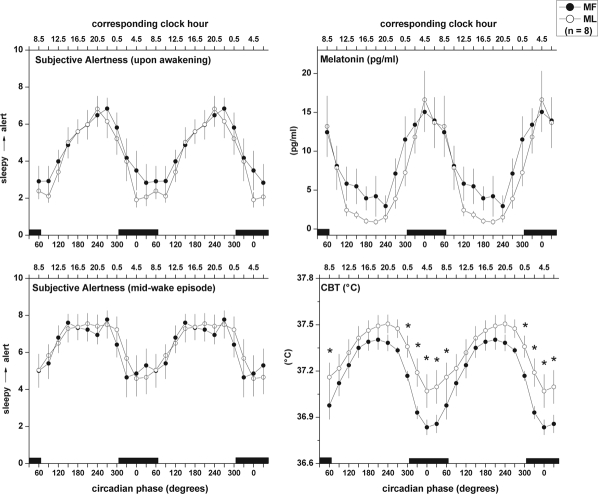Figure 4.
Circadian variation of subjective alertness, salivary melatonin, and core body temperature (CBT) at the MF and ML phases of the menstrual cycle obtained throughout the URSW. Two-way ANOVA for repeated measures revealed a significant main effect of circadian phase for measures of subjective alertness, melatonin, and CBT (P < 0.001), and a significant menstrual x circadian phase interaction for CBT only (P = 0.05). *indicates significant simple main effects tests reflecting menstrual phase differences (P < 0.05). CBT was continuously recorded throughout the URSW. Salivary melatonin samples were obtained twice during each wake episode. Subjective alertness (10-cm VAS; 0: extremely sleepy, 10: extremely alert) was assessed ∼2 min and ∼30 min after waking from each nap episode (upper and lower left panels, respectively). Data were first assigned a circadian degree (0° to 359.9°), then averaged into 30° bins, and finally folded every 24 h to combine data occurring at similar circadian phase throughout the 72-h URSW. Data are plotted at the middle of each bin, such that 0° reflects data in the 345° to 15° bin, 30° reflects data from 15° to 45° bin, etc. Data are repeated over 2 consecutive days for illustration purposes. Black bars represent time of projected habitual nocturnal sleep episode (mean ± S.D. circadian phase at bedtime and wake time are 305.9 ± 0.7 and 65.9 ± 0.7 circadian degrees, respectively). All values are mean ± SEM.

